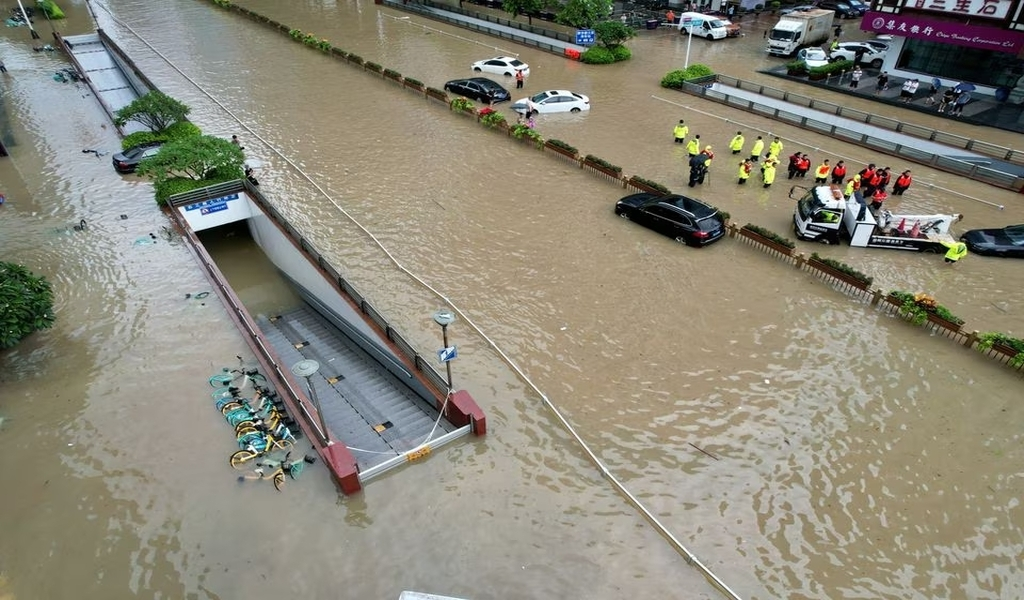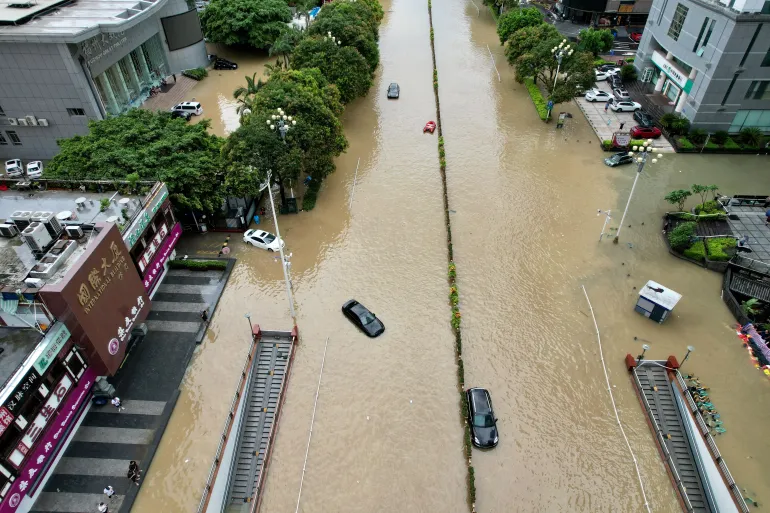News
Beijing Evacuates Thousands as Typhoon Doksuri Pummels Northern China

(CTN News) – Doksuri, one of the strongest storms to hit China in years, made landfall in the Philippines and Taiwan before lashing China’s coast. As it rolled inland, it brought heavy rainfall and prompted thousands to evacuate in Beijing and surrounding regions.
The China Meteorological Administration issued warnings about the potential impact of the storm as it continued to weaken but posed significant risks to the affected areas. With cumulative rainfall forecasts and potential risks, authorities were on high alert to mitigate the storm’s impact on millions of people.
Impact on Beijing-Tianjin-Hebei Region:
China’s national forecaster issued warnings of medium to high risk of rainstorm disasters for three days in a broad area encompassing the capital, Beijing. Thunderstorms were expected to peak on Saturday, raising concerns about localized rainfall reaching up to 600 mm (two feet).
As a precautionary measure, Beijing authorities suspended sports events, and several tourist spots and parks were closed. Over 200,000 rescue personnel were mobilized, and thousands of people were evacuated from the region.
Potential Impact on Southern Beijing and Surrounding Provinces:
Doksuri’s inland path led to forecasts of cumulative rainfall of 100 mm or more over 220,000 square km, affecting approximately 130 million people.
Small and medium-sized rivers in southern Beijing and provinces like Hebei, Shanxi, and Henan were at risk of swelling above warning levels, posing threats of flash floods and geological hazards in mountainous areas. With potential heavy rainfall, authorities urged residents to exercise caution and remain vigilant.
Previous Typhoons in Beijing:
Historical records showed that only a dozen typhoons have reached or passed through Beijing since 1951, with Typhoon Meranti in 2016 being the second-strongest to hit the southeastern province of Fujian.
The impact of one typhoon in 1956 left a significant mark, dumping 249 mm (10 inches) of rain on a weather station. Doksuri, as the most powerful typhoon to hit China in the current year, presented a significant challenge for authorities and residents alike.
Impact on Fujian Province:
Before hitting China, Doksuri had already affected Taiwan and the northern Philippines, causing fatalities and damages. In Fujian province, power lines were downed, trees uprooted, and more than 354,400 people were evacuated and resettled.
The province suffered over 478 million yuan ($67 million) in direct economic losses. Emergency workers and authorities were actively engaged in rescue efforts, with reports of people wading through floodwaters and damage to buildings and infrastructure.
Warnings for Central Provinces:
As Doksuri moved deeper inland, Anhui province experienced the storm’s weakening into a tropical depression, but the risk of heavy rainfall remained for central provinces like Henan and Shandong. Authorities issued warnings about potential mountain torrents, geological disasters, and waterlogging in these areas.
Conclusion:
Doksuri, a powerful storm, brought heavy rainfall and destructive winds as it hit the Philippines, Taiwan, and China. With its impact stretching over large regions of northern China, including Beijing, authorities were on high alert and taking precautionary measures to protect citizens and minimize damages. Despite the storm’s intensity weakening, the risks persisted, and residents were advised to remain vigilant and take necessary precautions to ensure their safety.





























